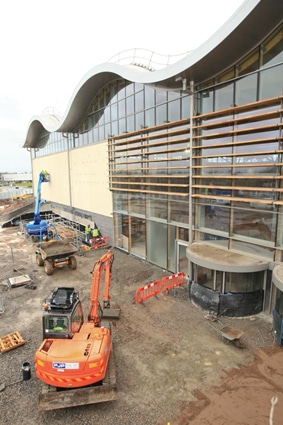The UK powered access equipment hire market – which consists of a range of mobile elevating work platforms (MEWPs) including scissor, boom and spider lifts, vertical masts and vehicle and trailer mounted lifts – saw an increase of 2% in 2016 in value terms, with a further 2% average annual growth forecast for the next 5 years.
Whilst the hire of powered access equipment forms part of the wider plant and tool hire market, it is dominated by specialist access equipment hire companies, who make up a majority share of the total hire market revenue in the UK, with only 25 – 30% being accounted for by more generalist plant and tool hire companies.
Between 2012 and 2016, the UK powered access equipment hire market saw reasonable growth, sustained by the buoyancy of the construction market and by the recovery in manufacturing industry, and the market also benefitted from growth in other sectors including warehousing, telecoms and events. However, growth has been inhibited by a persistent tendency for oversupply, with new companies entering the market and existing companies expanding their fleets, leading to downward pressure on rental rates.
While scissor lifts dominate the hire market in volume terms, representing nearly half of the total fleet, boom lifts are clearly the largest product segment by value. The mix of product types in the powered access hire market has changed somewhat in recent years with demand for low level access products, including small scissor lifts and vertical masts, growing more strongly than medium height access products, driven by the shift from non- powered to powered access in this segment of the market. The market has also seen a significant expansion in the number of spider lifts in the UK fleet.
Hayley Thornley, Market Research Manager at AMA Research said: “Legislation is an important driver of fleet renewal, and the current legislation changes in the area of engine emissions is leading to an increased focus on electric and hybrid-powered equipment among powered access equipment hire companies. Recent product developments that have added value to the powered access equipment hire market have been centered around the area of telematics, in order to improve safety and to improve equipment efficiency.”
There has been some consolidation in the industry in the last few years as leading companies have sought to strengthen their market penetration through acquisition, and the market has also seen the loss of Hewden, a major player in the hire market. The powered access hire market now has a relatively high level of concentration, with the top three companies accounting for around a third of the overall market.
Prospects for the construction industry, which remains the key influence on the powered access equipment hire market, is for low level growth in the medium term, and a similar trend is forecast for the powered access equipment hire market, which is expected to see growth of 1-3% per annum until 2021. Infrastructure construction is likely to be a key driver of demand, with the government being committed to over £100 billion worth of investment under its National Infrastructure Delivery Plan.
However, prospects for private commercial and industrial construction are less positive and vulnerable to economic uncertainties. The Brexit decision has already led to a market decline in the value of sterling which, as most powered access equipment is manufactured outside the UK, is leading to higher new equipment costs in the short term. Given the continuing issue of oversupply and depressed rental rates, hire companies may find it difficult to pass these higher costs on to customers.
The ‘Powered Access Equipment Market Report – UK 2017-2021 Analysis’ report is published by AMA Research.
www.amaresearch.co.uk


